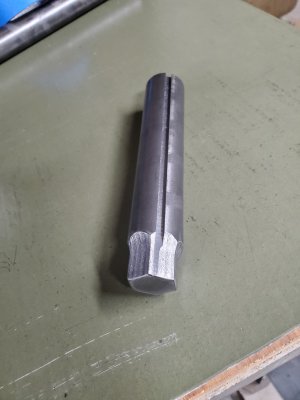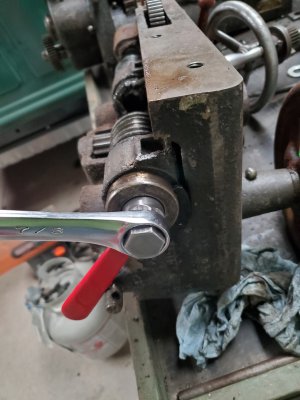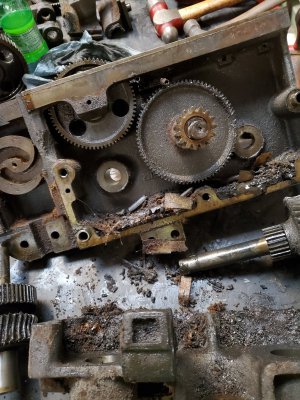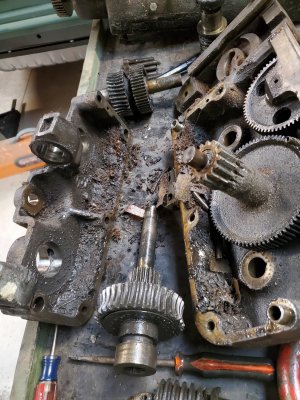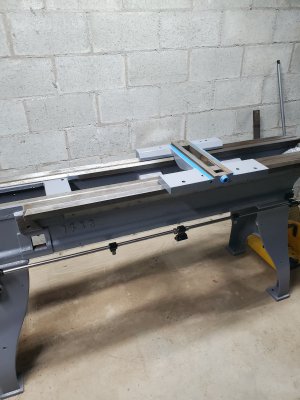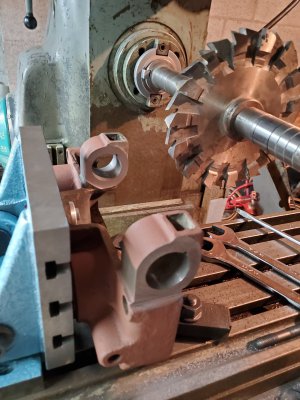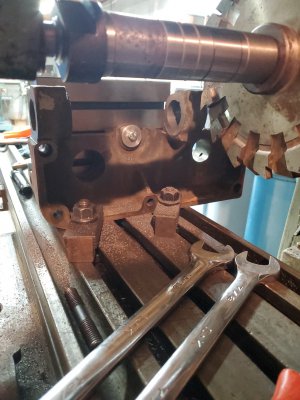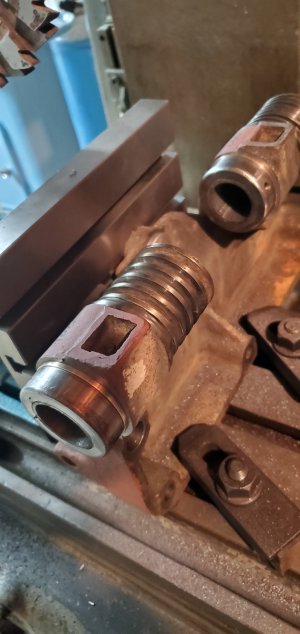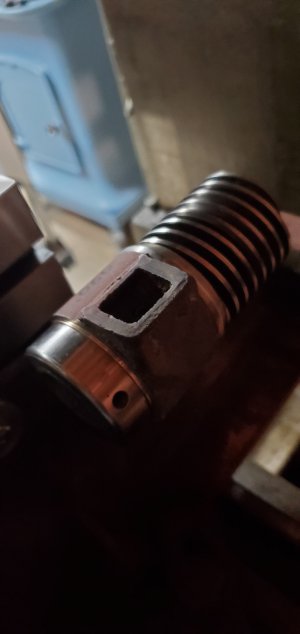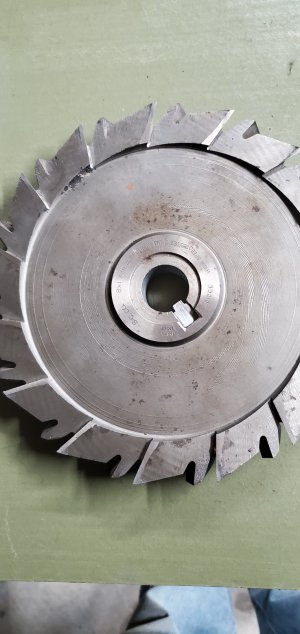This morning, I bolted the legs on the bed and leveled the lathe. I'm sure I will have to re-level it after I get it all assembled, but for now, I just wanted to get it as level as possible to hopefully prevent causing any twist in the bed while I am working on it.
I assembled the forward/reverse feed clutch shift mechanism inside the headstock end of the bed, then went to work on the 2 feed control shafts.
The lower of the 2 shafts has detents cut into the bottom of the right end. These detents are basically a set of notches that allows the operator to 'feel' where each position (forward, neutral, reverse) is when operating the feed control handle. There is a piece of formed steel that rides on the shaft, and has a corner that 'clicks' into the notches.
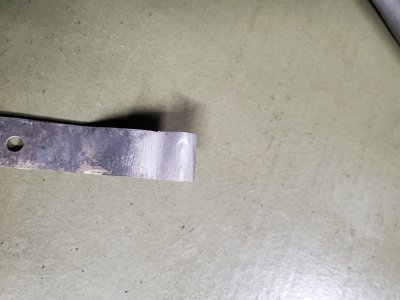
As you can see, this corner was completely worn away on this one.
I fired up the TIG welder and built the corner back up...
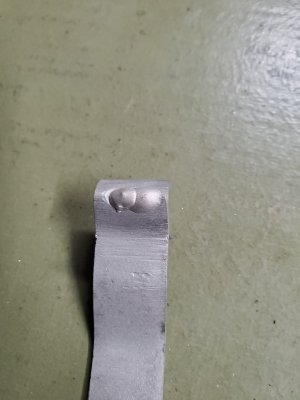
I then reshaped the corner on the belt sander...
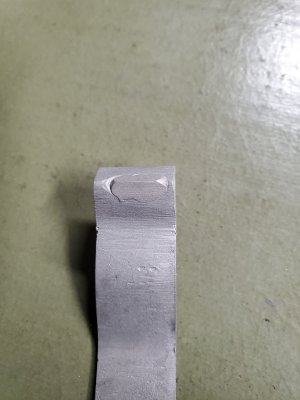
Hopefully, that will cure the issue of not being able to tell where neutral is...
I finished cleaning the lower shaft and brackets, then painted the brackets. While the paint was drying, I cleaned up the middle shaft.
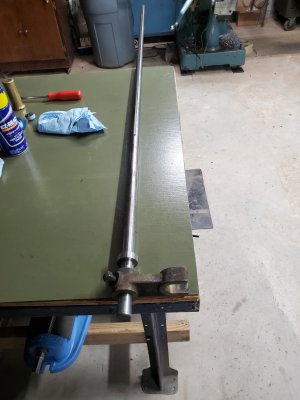
The middle shaft is actually what engages the feed clutch... the lower shaft has 2 adjustable stops on it that disengage the feed when the apron contacts the stops.
This is how it looks now...
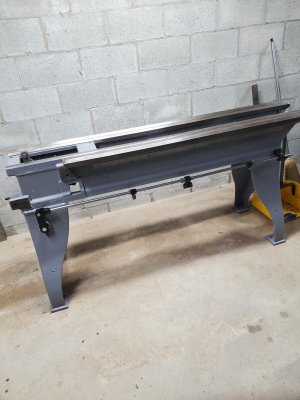
I installed the lower shaft, but will have to take it back off to mount the apron.
This is what the detent setup looks like...
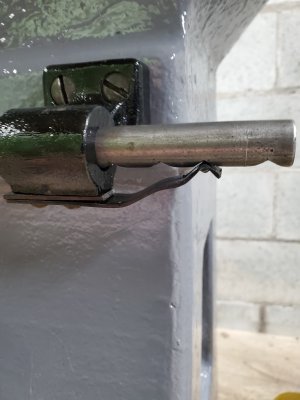
Now I guess I will start on cleaning the carriage...
-Bear









